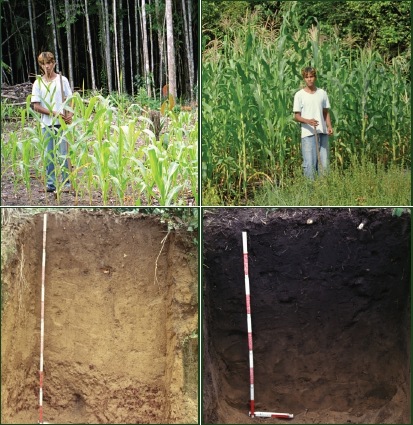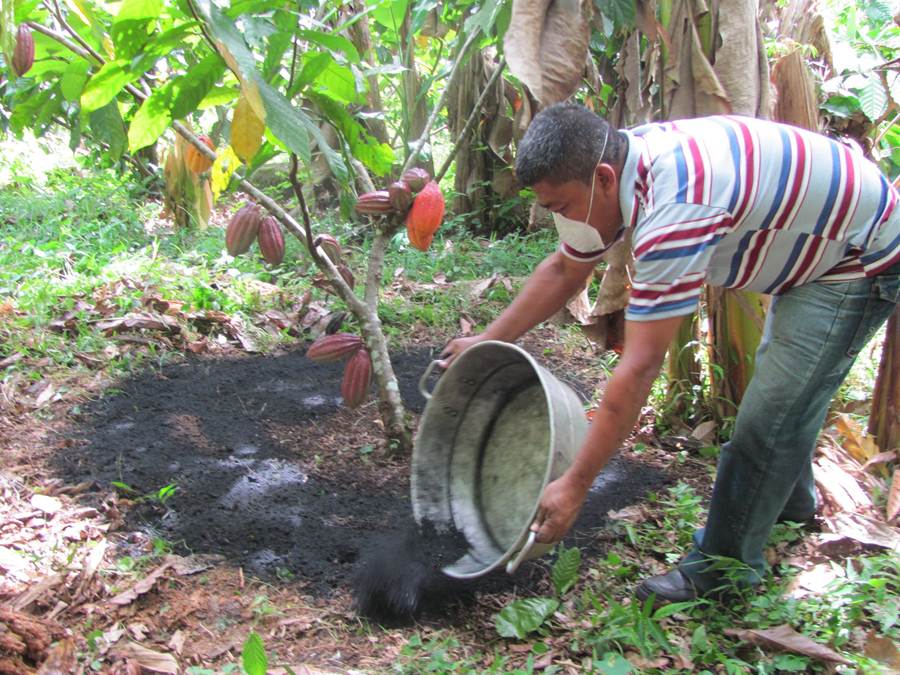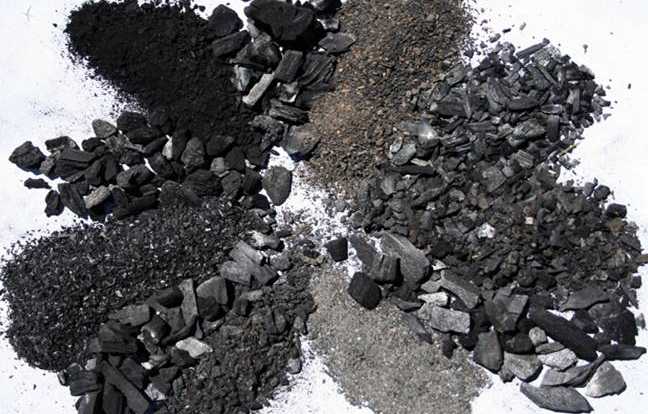Biochar: is there a dark side?
In the last 5 years, the term “biochar” has been popping up a lot in the scientific literature and popular press; it is often presented as the “silver bullet” that will solve all problems in agricultural production. But what is it exactly? Are the claimed benefits real? Have the promises come through?
Biochar has been defined as charcoal-like by-product produced during the thermal conversion of biomass to energy. Just like charcoal, it features small black, light and highly porous fragments. Biochar is mostly composed of carbon and ash, but the overall composition and characteristics depends on the type of biomass used as feedstock and the production conditions (i.e., type of thermal conversion and temperature used). So, it is clear that there is a wide variety in types of biochar, with implications for what it can do when added to a soil.
Historical perspective
In order to understand the excitement about biochar, it is rather important to know the history underlying the development of this soil amendment. About 60 years ago, soil scientist Wim Sombroek discovered what we now know as “Terra Preta de Indio” or “Black Earth of the Indian” in Amazonia. Presumably, the indigenous people created and managed these peculiar soils between 500-2500 years ago by continuously adding charcoal derived from cooking along with charcoal and/or fresh biomass from agricultural waste and forest clearings. This continuous addition of charred biomass turned these soils very dark in color, extremely high in organic matter, and very fertile in comparison to the adjacent highly weathered soils; it is almost a black and white contrast. Hence, there has been a great interest in understanding exactly how these Black Earth soils were formed, the mechanisms behind their high fertility, and the persistence of their fertility long after they were ‘created’. In the past five years, interest in generating similar soils through the addition of modernly produced biochar has dramatically increased, but obviously it is very difficult, not to say impossible, to generate in a few years something that was formed over decennia to centuries.
The claimed benefits

The list of potential gains from applying biochar to soils that are reported in the literature is almost endless:
- increased yields of up to a doubling
- increased fertilizer efficiency
- increased water quality due to retention of pollutants, such as pesticides, herbicides, nitrate, phosphate, heavy metals, etc.
- mitigation of climate change due to the sequestration of carbon in a resistant form, the reduction of the emissions of the potent greenhouse gases nitrous oxide and methane, production of renewable energy, etc.
- decreased ammonium emissions
- disposal of green waste from agriculture and forestry
Some of the more mundane benefits, which actually drive the above-mentioned benefits, are:
- increased cation exchange capacity of the soil
- increased soil moisture
- increased soil pH (i.e. less acidic)
- increased soil microbial biomass
The less popular drawbacks

Unfortunately for each of the listed benefits above, a counterargument or drawback has been found:
- In some cases, yields may decline because of the sorption of water and nutrients by the biochar, which reduces the availability of these resources for the crops. Biochar has also been shown to inhibit germination.
- The sorption of pesticides and herbicides by the biochar can reduce their efficacy.
- Some biochars can act as a source of contaminants, such as heavy metals, VOCs (Volatile Organic Compounds), PAHs (Polycyclic Aromatic Hydrocarbons), and DOC (Dissolved Organic Carbon).
- The reduction in nitrous oxide emissions is not universal and emissions even increase sometimes.
- The fine ash associated with biochar is the perfect source for dust, posing a risk for respiratory diseases.
- Long-term removal of crop residues, like stems, leaves and seed pods, to be used for production of biochar can reduce overall soil health by diminishing the number of soil microorganisms and disrupting internal nutrient cycling.
- The increase in cation exchange capacity depends on the composition of the soil: it is minimal in soils with high clay or organic matter content, especially at realistic rates of biochar additions.
- In high pH (alkaline) soils, an increase in soil pH is not desirable as crops only tolerate a certain range of soil pH.
What’s next?
We hope that the above listing has convinced you that, yes, biochar might have some potential, but let’s be cautious. Before proceeding with the promotion of biochar as a soil improving amendment some things need to be figured out:
- Most studies have been done under laboratory conditions and in the short-term (< 2 years). Hence, long-term field trials of biochar additions need to be conducted.
- There is a broad spectrum of biochars and a lack of standardization among the currently available biochars, leading, in part, to the divergent effects. Hence, a rigorous definition and standardization of what a good biochar is, needs to be established.
- Since there are many benefits and drawbacks associated with different biochars, thorough trade-off analyses are necessary. For example, to which soil and/or crop should we add which biochar? Do we want to produce biochar purely for biochar without the additional benefit of energy production?
- It is very pertinent to assess the economic and logistical feasibility of biochar applications at larger scales under field conditions.
Currently, many researchers are starting to address these issues and are working towards drafting recommendations for the use of biochar. The overall goal is to ensure that farmers get the most out of the potential benefits of biochar while avoiding the many potential drawbacks. Only when all of this has been figured out, will we know to what degree biochar really is beneficial. Currently, it is looking like the claims of its benefits have been exaggerated.
This blog has been co-written by Johan Six, Engil Pujol Pereira and Elizabeth Verhoeven.

